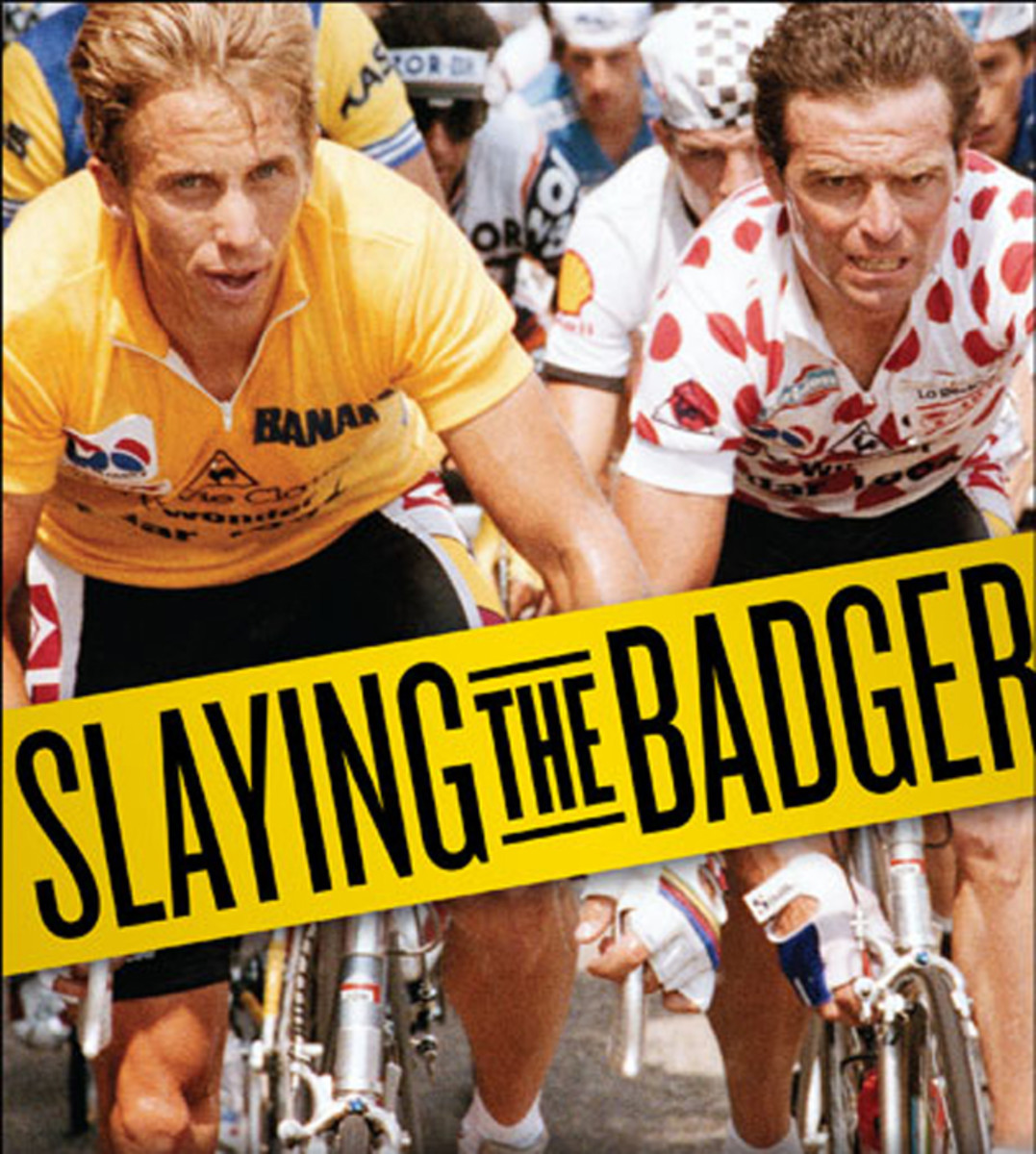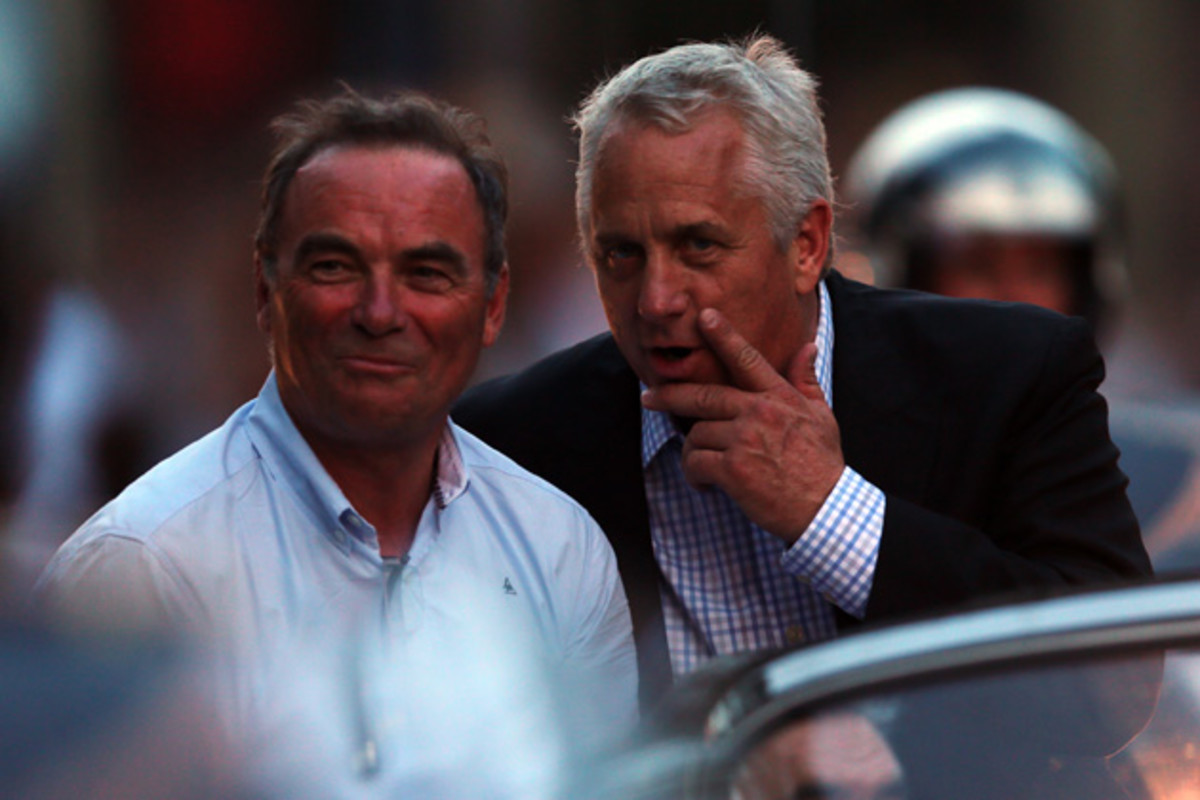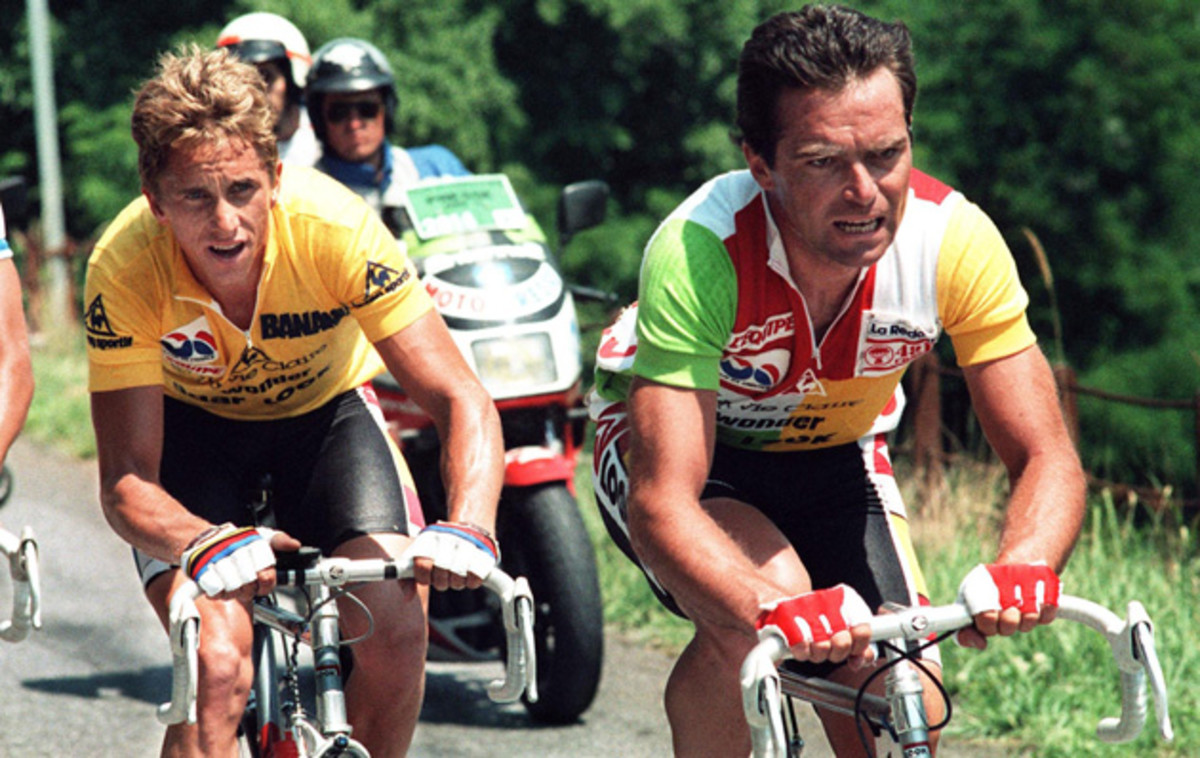LeMond vs. the Badger: New film recalls cycling's stormy friendship

In 1985, Bernard Hinault won the Tour de France; his teammate, Greg LeMond, finished second. In 1986, Greg LeMond won the Tour de France; his teammate, Bernard Hinault, finished second. A simple case of reciprocity, of friendship, of French legend Hinault—nicknamed “the Badger” for his famous tenacity—grooming his young American cadet and then helping propel him into orbit. On the surface, anyway.
But, as deftly shown by director John Dower’s engaging documentary Slaying the Badger, based on Richard Moore’s book of the same name, few notions could be further from the truth.

Perhaps it’s best to begin at the end. Just before the credits roll, the film displays on-sceen a text (it does this a lot, in lieu of a narrator) that notes that it has been 29 years since a French rider has won the Tour de France. Historically, this is about as foreign a concept as the Yankees going 29 straight years without winning a World Series. But where the Yankees were enabled in no small part by the infamous “Curse of the Bambino,” the French winless spell might be attributable to another, well, spell: call it the “Curse of the Badger,” if you like.
Just as nobody blamed the Babe himself for Boston’s long-lasting futility, neither does Dower—or any of the subjects he interviews, even LeMond—pinpoint the Badger as the root of bad vibes. Instead, the villain (and rough Harry Frazee equivalent) of Dower’s story is undoubtedly Paul Koechli, the manipulative directeur sportif of Hinault’s powerhouse La Vie Claire team. When Koechli, speaking deliberately and audibly licking his chops in a slightly creepy manner, claims that he encouraged LeMond to attack at a critical moment in the 1985 race, Dower cuts to LeMond’s reaction: “That’s bulls**t.” Later, when Koechli declares that he does not remember Hinault publicly announcing that he would support LeMond in ’86 (a demonstrably false claim), Dower chimes in off-screen to contest the point. “I never understood [the commitment] this way,” says Koechli, lamely.
At issue is what Dower calls Koechli’s “revolutionary new approach to cycling tactics,” which essentially called for the nine riders that comprise a team to compete in the Tour without a single fixed leader. While the strategy flew in the face of Hinault’s promise to, “suffer for [LeMond] as he sacrificed for me,” the film fails to acknowledge that, on paper, it worked. In 1986, six La Vie Claire riders finished among the top 23 of the Tour, headlined by the 1-2 punch of LeMond and Hinault. What’s more, the squad won the team competition by nearly two hours, Hinault wore the polka-dot jersey as best climber, and American Andy Hampsten finished fourth overall and wore the white jersey as the Tour’s best young rider—all results that would have been much harder to come by if the whole team rode in support of LeMond. By any objective standard, Koechli’s strategy helped La Vie Claire produce one of the greatest showings by a team at the Tour since the modern trade team era began in 1962.

But Koechli’s no-leader approach had profound psychological shortcomings, and it is in displaying the emotional toll that the uncertainty took on LeMond that Slaying the Badger shines brightest. From the time Hinault first “discovers” a youthful LeMond, looking not a little like Dennis Christopher in Breaking Away, in Nevada and whisks him away to Cyrille Guimard’s Renault team, Dower convincingly depicts LeMond as an isolated pioneer who lacked any companions on the racing circuit, save for his devoted wife, Kathy. (Though the photos of Hinault and Guimard decked out in cowboy garb during their U.S. visit are hilariously priceless). Even as he learns French and wins fans (and races), LeMond seems emotionally fragile: after one stage, he fights back tears while haranguing Koechli, then abruptly turns to a journalist who has gotten too close and asks “Do you want me to punch you in the face?”
Hinault, meanwhile, is every bit the badger of lore. Perhaps the most poignant assessment of his character comes from Shelley Verses, herself a trailblazer as the first female soigneur on the European circuit and a welcome presence in the film: “If somebody wanted to take a piss, you had to ask Hinault.” Here was the ultimate competitor, a cold-blooded assassin with a penchant for the unexpected and dramatic. And even three decades later, Hinault is unapologetic: when he explains his kamikaze attack on stage 13 of the ’86 race by saying, “I had fun like a crazy little boy,” the viewer is wholeheartedly inclined to take him at his word.
There is nothing, fun, though, about the post-stage 18 side-by-side French TV interview in 1986 that provides the most poignant moment in the documentary (which debuted at the Tribeca Film Festival in April and is showing on ESPN). Asked by a commentator whether he can still win the Tour, Hinault, an hour after he and LeMond stirringly crested Alpe d’Huez hand-in-hand, casually remarks: “The Tour is not finished….It’s a sporting war….Why don’t we let the final time trial decide?” Sitting beside Hinault, LeMond, moments before resplendent in the leader’s yellow jersey, suddenly looks shattered and utterly alone, betrayed by a man he had respected so deeply for so long. He still looks shocked as he recounts the incident 28 years later.

And that, in turn, is among Slaying the Bader’s few shortcomings: in its habit of juxtaposing contrasting stories of events by explicitly portraying interviewees reacting to old films or one another’s comments (with Dower, presumably, as either the messenger or clever editor, or both), the film marginalizes the alluded-to but little-explored friendship between LeMond and Hinault, making the break between the pair less surprising. And Dower’s treatment of the later years of LeMond’s star-crossed career—a chapter in many ways more compelling than the movie’s main tale—feels perfunctory, adding length but not depth to the central narrative arc.
As with any story about American cycling these days, the disgraced presence of Lance Armstrong looms in the background. Clips of the Texan’s now-annulled Tour victories bookend the tale, to mixed effect. While Dower contributes to the growing vindication of LeMond for his early skepticism of Armstrong's drug-tainted wins, the film’s brief treatment of the rise of doping in the sport also contributes little of substance to the LeMond-Hinault conflict that consumes 67 of the film’s 77 minutes.
That’s a shame, since a fuller view of the wide-ranging impact of doping in cycling might have added some complexity to interviewees like Koechli, who was vehemently anti-drug throughout his coaching career. Instead, the old coach remains a one-dimensional character—albeit a most intriguing one within a most intriguing story that Dower has, on the whole, told well.
